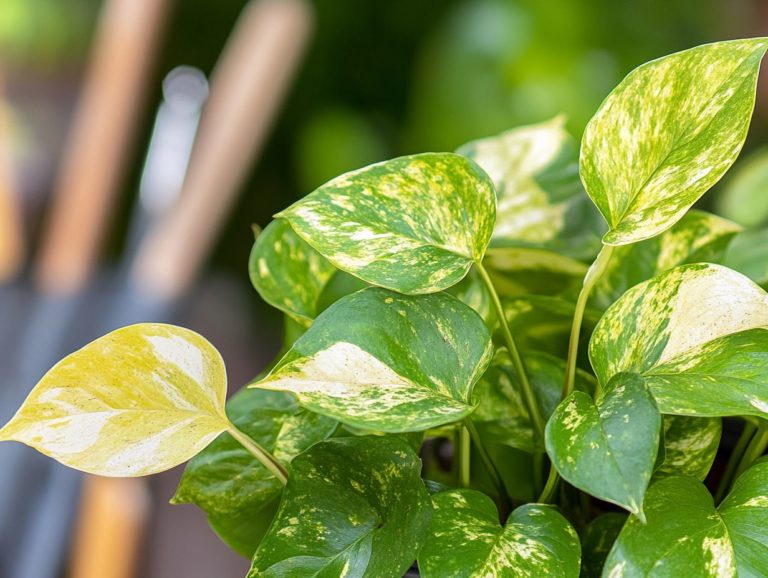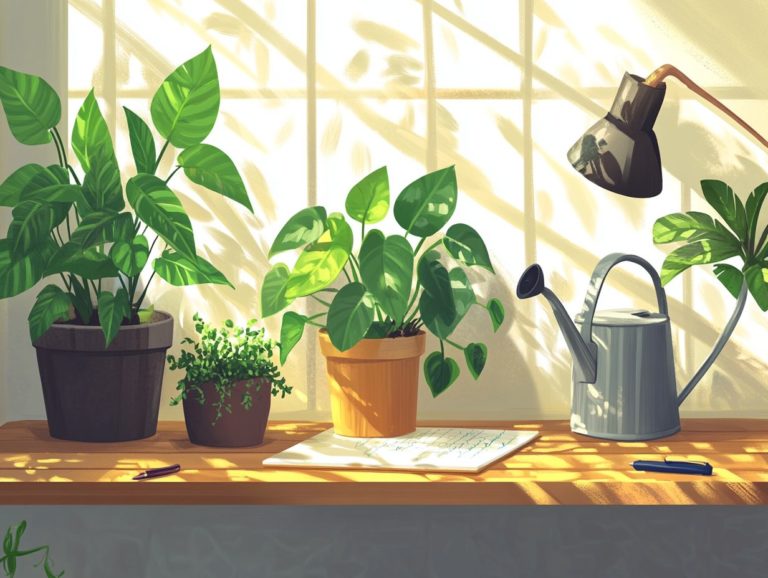How to Address Indoor Plant Finicky Behavior
Indoor plants, especially houseplants, can become your ideal companions, infusing beauty and vitality into your living spaces. They can display finicky behavior that leaves you puzzled over their care needs.
It’s crucial to understand the factors that influence their growth and health, such as humidity and light conditions. This knowledge will help you nurture these green allies effectively.
This article explores common signs of plant distress, like wilting and yellowing leaves. It offers effective strategies for addressing their quirks and proactive measures to prevent potential issues.
Get ready to keep your houseplants thriving with these simple, practical tips!
Contents
- Key Takeaways for Houseplant Care:
- Understanding Indoor Plant Behavior
- Common Signs of Finicky Behavior
- Addressing Finicky Behavior
- Preventing Finicky Behavior
- Best Practices for Indoor Plant Care
- Frequently Asked Questions
- 1. How can I prevent my indoor plants from being finicky?
- 2. Why do indoor plants become finicky?
- 3. What are some signs of a finicky indoor plant?
- 4. How can I properly water my finicky indoor plant?
- 5. Can I use fertilizers to address finicky indoor plant behavior?
- 6. How do I deal with finicky indoor plants that are sensitive to changes in their environment?
Key Takeaways for Houseplant Care:
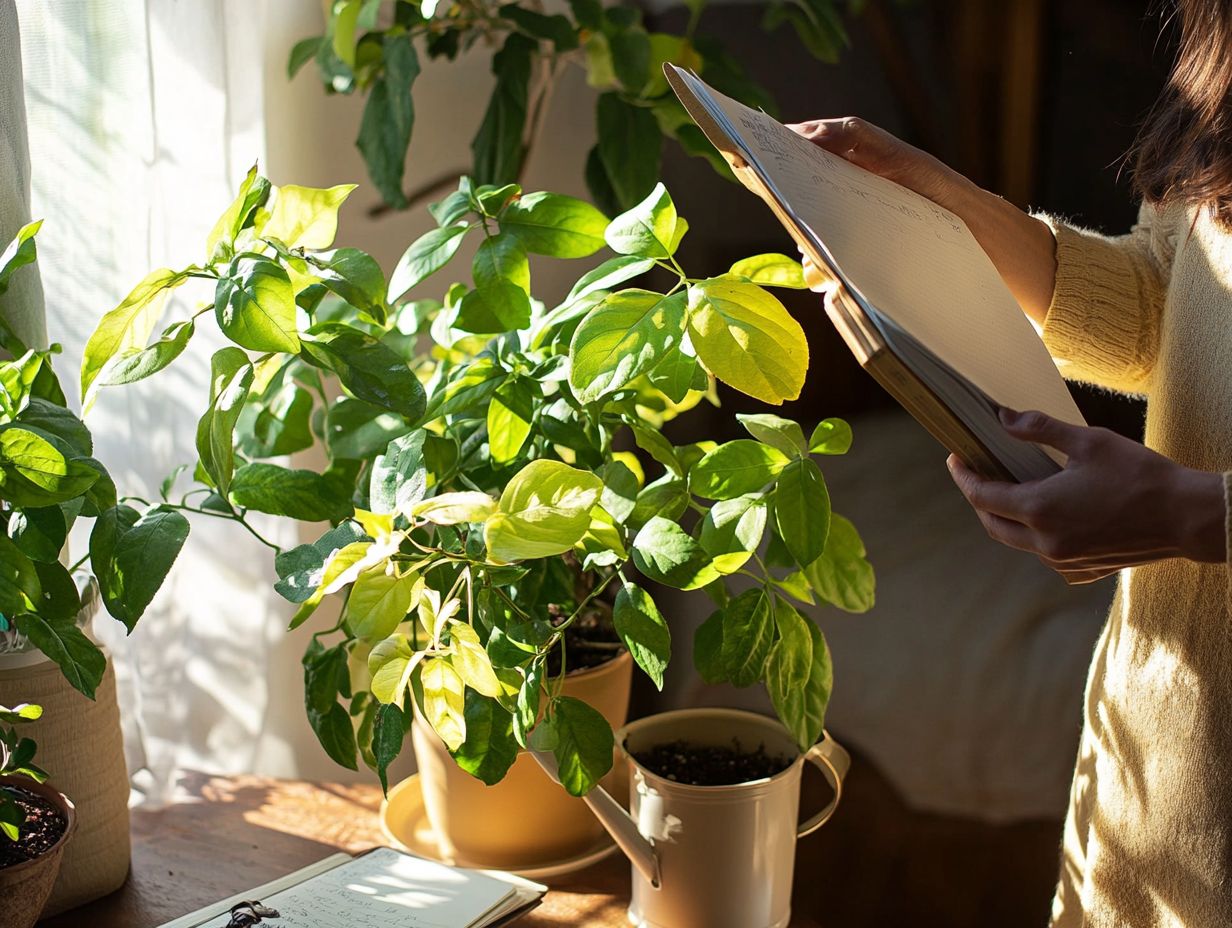
- Understand your houseplant’s behavior by considering factors like light, temperature, and watering to promote growth and health.
- Identify and interpret common signs of finicky behavior, such as wilting leaves or yellowing foliage, to address any plant problems promptly.
- Effectively address finicky behavior by adjusting care routines and providing the right conditions for your houseplants.
Understanding Indoor Plant Behavior
Understanding indoor plant behavior is essential for you as a plant enthusiast. Whether you’re cultivating a thriving indoor jungle or enhancing your green spaces, knowing how houseplants respond to their environment is key.
Factors like humidity and light conditions significantly influence symptoms such as wilting and yellowing leaves. By grasping these dynamics, you can implement effective plant care strategies, creating an indoor haven filled with vibrant houseplants.
Factors Affecting Plant Growth and Health
Several factors significantly influence the growth and health of your houseplants. It’s essential to be aware of their specific needs.
High humidity levels benefit tropical plants like alocasia and ZZ plants, which thrive in moist conditions. In contrast, succulents prefer the drier air typical of our homes.
Moreover, adequate light exposure whether from natural sunlight or LED grow lights plays a crucial role in powering photosynthesis. This process fuels vibrant foliage and robust growth for your indoor plants.
Be cautious with watering; both over- and under-watering can lead to issues like root rot or drought stress. To know when to worry about your indoor plant, it’s essential to recognize that each plant species has its own preferences. Understanding the unique requirements of varieties such as monstera and pothos is vital for cultivating your lush indoor oasis.
Common Signs of Finicky Behavior
Houseplants can sometimes display signs of finicky behavior, such as wilting leaves or yellowing foliage. Recognizing these indicators is essential for diagnosing conditions related to humidity, light exposure, or potential plant diseases.
By understanding these common signals, you can promptly address the needs of your indoor plants, ensuring they flourish in their environment.
Start nurturing your indoor garden today, and learn to avoid common pitfalls with indoor plant care mistakes and solutions, and watch your green companions thrive!
Identifying and Interpreting Plant Reactions
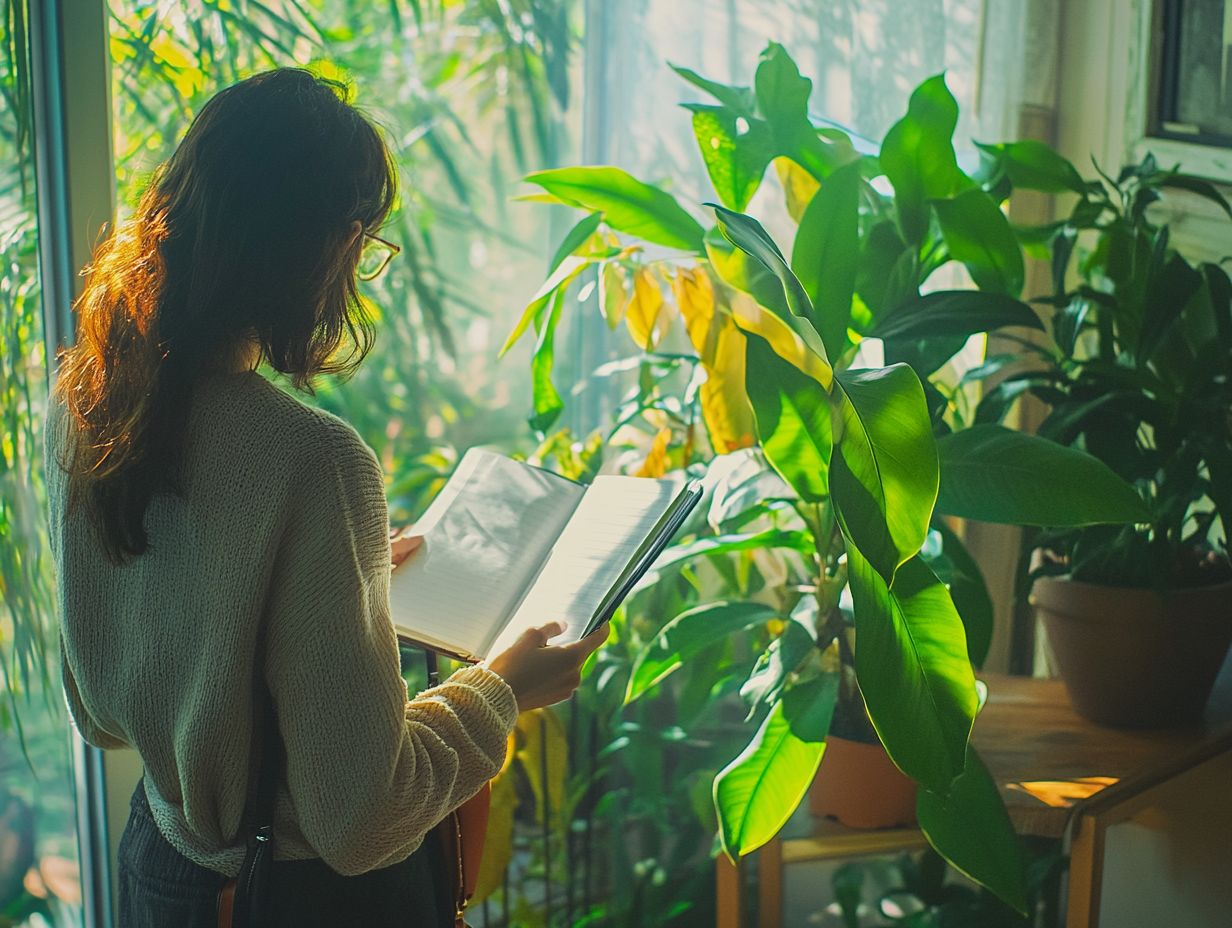
Identifying and interpreting your plants’ reactions is crucial for nurturing a vibrant and healthy indoor plant collection. Various signs, such as stunted growth or leaf discoloration, can indicate underlying issues related to humidity, sunlight exposure, or care practices. Monitor these signals closely. This helps create green spaces that enhance your home’s beauty and support optimal plant health.
To effectively assess how your houseplants respond to their environment, pay attention to small signs. For instance, yellowing leaves often point to a nutrient deficiency or overwatering, while browning leaf tips could signal low humidity or excessive heat. Regularly check soil moisture levels and adjust your watering schedule accordingly to meet your houseplants sensory needs.
Rotate your pots periodically for balanced sunlight distribution, preventing one-sided growth in your indoor plants. By attuning yourself to these reactions, you can customize your care routine and foster thriving indoor ecosystems that bring life to your green spaces. For additional insights, learn how to overcome indoor plant stress.
Addressing Finicky Behavior
Don t let finicky plants dim your indoor jungle! Use effective strategies to keep them healthy and vibrant. Addressing finicky behavior in your houseplants calls for tailored maintenance techniques focused on proper watering, humidity levels, and light conditions. This approach can significantly enhance the resilience of your indoor greenery.
Understanding each plant’s unique requirements from snake plants to lucky bamboo and cast iron plants is essential for cultivating a thriving plant collection. For tips on indoor plant care and troubleshooting common issues, it’s important to stay informed.
Effective Strategies and Techniques
Employing effective strategies and techniques is essential for successful plant care, especially with easy plants like snake plants and philodendrons. For example, propagation is the process of growing new plants from existing ones. It s an exciting way to expand your collection and deepen your understanding of each species’ specific needs, enhancing your overall gardening experience. By following key gardening tips, you can navigate the challenges of indoor plant care with confidence.
Understanding propagation methods, like stem and leaf cuttings, can significantly benefit your houseplants. For instance, philodendrons and pothos thrive when propagated directly from cuttings placed in water, sprouting new roots within weeks. Additionally, it’s important to learn how to recognize indoor plant nutrient needs to ensure they flourish.
Maintaining the right humidity level and light exposure fosters healthy growth in your plants. As you experiment with other popular species like ZZ plants, spider plants, and aloe vera, consider factors such as soil moisture and temperature to ensure optimal care.
Mastering these techniques will enable you to create lush and vibrant green spaces in your home.
Preventing Finicky Behavior
Preventing finicky behavior in your houseplants requires a thoughtful approach that prioritizes their health from the very beginning through proper plant selection. Assess environmental factors like humidity and light, making educated choices when selecting your houseplants. This allows you to cultivate an ideal atmosphere for your indoor greenery.
It’s essential to provide care that aligns with each plant’s unique requirements, as this will help you sustain their vitality and enhance their aesthetic appeal. For additional guidance, check out these top tips for indoor plant care troubleshooting.
Proactive Measures for Healthy Plants
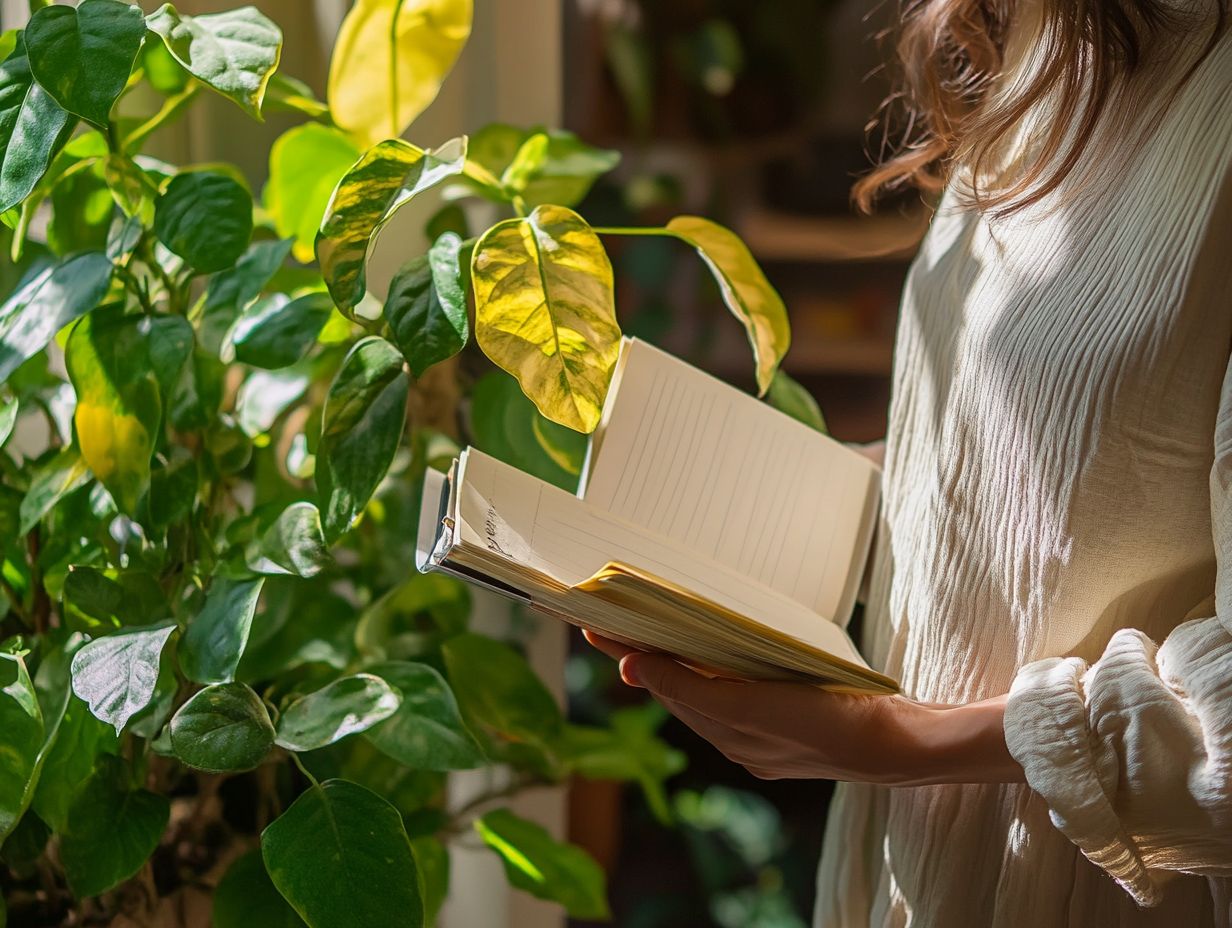
Implementing proactive measures for your houseplants is essential for creating a thriving indoor collection. By understanding and adjusting environmental conditions, such as humidity and light, you can foster growth and vitality. These practices enhance both plant care and the overall aesthetic of your indoor space.
For instance, succulents like jade plants thrive in bright, direct light. Meanwhile, ferns prefer indirect light and higher humidity. To best support your succulent collection, position them in a sunny south-facing window and water them infrequently to mimic their native arid habitat. Keep plant toxicity in mind. Conversely, to create a lush display of ferns, regular misting and placing them in a humid corner can significantly boost their vibrancy and health. If you encounter any issues, refer to indoor plant problems: when to seek help for guidance.
Such thoughtful adjustments help your indoor plants not just survive, but truly thrive, enriching both the beauty and life of your home.
Best Practices for Indoor Plant Care
Adopting best practices for indoor plant care is crucial for ensuring your houseplants thrive throughout their lifecycle. From mastering watering techniques to understanding light conditions, every detail of houseplant maintenance matters.
By integrating proven care techniques, you can keep your indoor green spaces vibrant and resilient against common indoor plant issues.
Tips for Maintaining Happy and Healthy Plants
To keep your houseplants happy and healthy, it s vital to adopt effective care tips that address their unique needs. Understand humidity, light, and effective gardening strategies to enhance your houseplant care. Tailoring your routines to specific plant types allows you to cultivate a thriving indoor oasis.
Tropical plants like philodendrons flourish in humidity levels of 60% or higher. Using a humidifier or placing them on a pebble tray can create a remarkable difference. To ensure your indoor plants thrive, it’s also helpful to learn how to avoid common indoor plant problems. On the other hand, succulents, such as jade plants and aloe vera, prefer drier conditions, making it essential to avoid overwatering.
For light, position snake plants in indirect sunlight for robust growth, while colocasia and Norfolk Island pines may appreciate a brighter location. These personalized strategies not only boost plant vitality but also transform your home into a vibrant green sanctuary filled with lush indoor greenery.
Frequently Asked Questions
1. How can I prevent my indoor plants from being finicky?
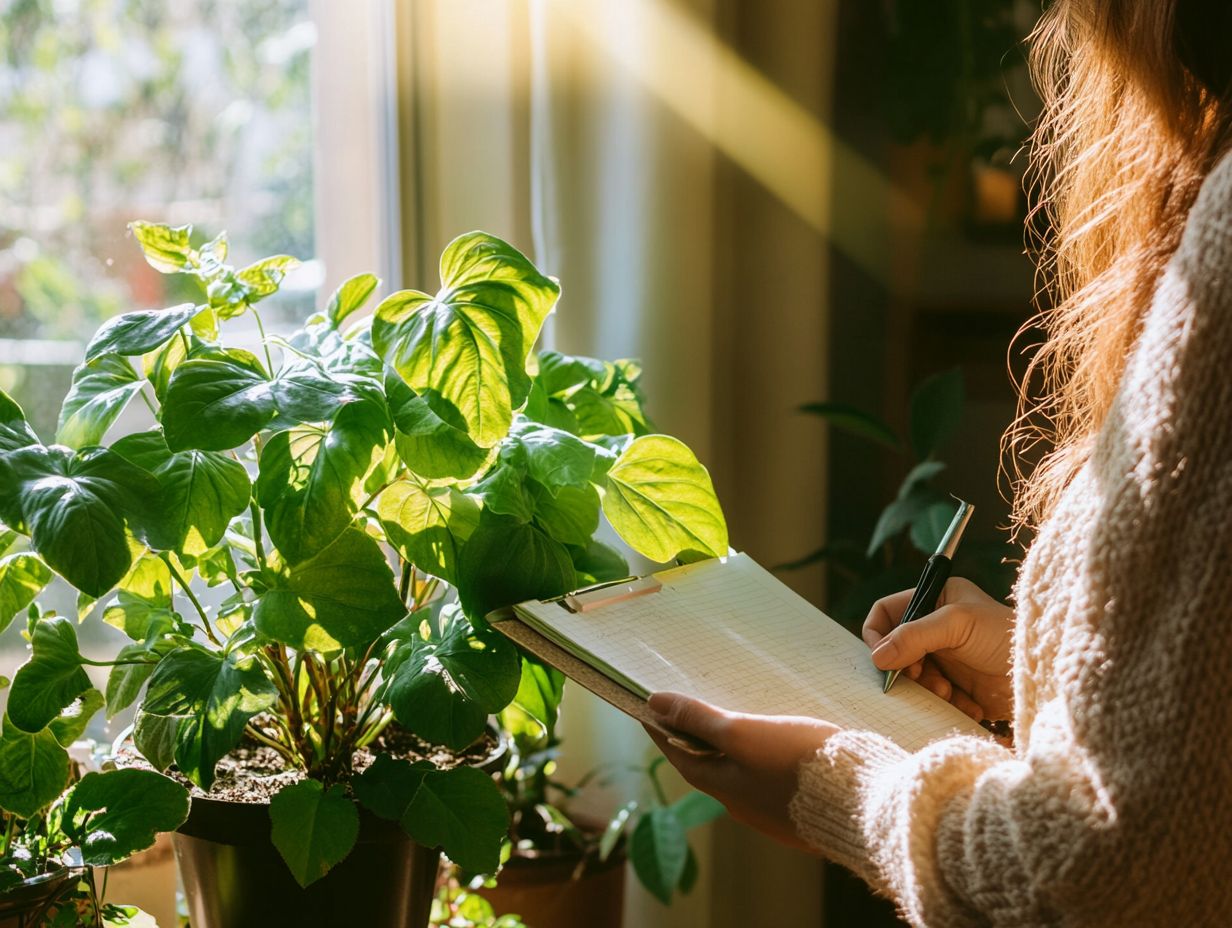
To prevent your indoor plants from being finicky, provide them with the right amount of water, sunlight, and nutrients. Pay attention to signs of stress, such as wilting or yellowing leaves, and address them immediately.
2. Why do indoor plants become finicky?
Indoor plants can become finicky for various reasons, including changes in environmental conditions, pests, diseases, or improper care. They may also react to chemicals or toxins in their surroundings.
3. What are some signs of a finicky indoor plant?
Signs of a finicky indoor plant include yellowing or browning leaves, wilting, and stunted growth. Dropping leaves or flowers may indicate stress and potential problems.
4. How can I properly water my finicky indoor plant?
To water a finicky indoor plant, check the soil moisture first. Insert your finger about an inch deep; if it feels dry, it s time to water. Be careful not to over-water, as that can lead to root rot.
5. Can I use fertilizers to address finicky indoor plant behavior?
Fertilizers can help with finicky indoor plant behavior. Use the correct type and amount for your specific plant, as over-fertilizing can cause problems. Don t hesitate to ask a gardening expert for help!
6. How do I deal with finicky indoor plants that are sensitive to changes in their environment?
If your indoor plant is sensitive to environmental changes, maintain a consistent setting. Avoid frequent relocation and ensure stable humidity and temperature.



